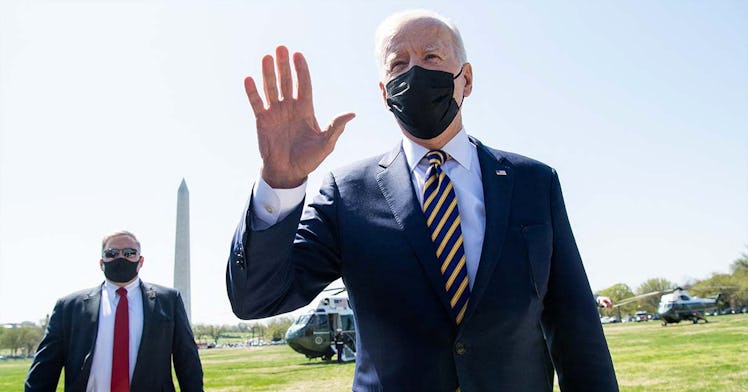Why Biden’s Big Bill Probably Won’t Fix Your Child Care Problems
Childcare funding and reform was left out of Biden's initial infrastructure plan. Here's what parents need to know.

The American Jobs Plan is the Biden administration’s first crack at an infrastructure bill, and it’s encouraging that it includes help for care economy workers like home health aides. Seeing infrastructure not just as roads and bridges, but also the workers that allow society to function is a good way to look at work — and how some work supports the rest of our economic lives. But missing from the current proposal is funding to shore up the childcare industry, a huge sector of the care economy that needs specific attention to recover from COVID-19. Never has the child care problem in the country been so acutely felt — and never has it been seen more as an infrastructural tool that allows people to work, live, and engage in the full economy. It was also one of the first things to crash amid COVID-19, leading to many, many women and moms losing their jobs during the pandemic.
“As we build back from a pandemic that has disproportionately burdened women, we need to recognize that child care is essential infrastructure that makes our workforce and our economy globally competitive,” Rep. Katie Porter said in a statement to Vox.
Leaving out childcare workers means a huge segment of the care economy, arguably the sector most relevant to working-class parents, will remain to struggle with the astronomical cost of daycare, the lack of access to child care, and even the lack of access to child care jobs. The Biden administration isn’t publicly bailing on those workers or parents, but advocates for affordable childcare are concerned that their priorities aren’t reflected in this first bill. Why?
Here’s what parents need to know.
So what’s Biden’s plan for child care right now?
“In the coming weeks, the president will lay out his vision for a second package that focuses squarely on creating economic security for the middle class through investments in child care, health care, education, and other areas,” a Biden administration official told Vox.
So there’s the strategy: split up the infrastructure spending initiatives into separate bills. But is it a wise strategy?
Many advocates think that the Biden administration could exhaust its supply of political capital on the already-introduced bill, leaving the second measure with childcare provisions to wither on the vine. Indeed, the infrastructure bill that Biden has announced has yet another big boy price tag — and some worry that Congress will be reticent to sign another massive spending bill, the third in a row. That being said, child care is overwhelmingly popular on a bipartisan basis, which could leave it immune to political bickering.
What might the Biden administration do about childcare in the third big spending package?
During the presidential campaign, Biden introduced a plan to “create a 21st century caregiving and education workforce.” Among its provisions were:
- free, universal pre-kindergarten for all three- and four-year-olds
- an $8,000 tax credit for low- and middle-income families to pay for child care (or access to sliding scale childcare that would cap costs at a certain percentage of income)
- more stringent childcare standards
- expanded access to after-school, weekend, and summer care
- access to childcare for community college students who are parents
- additional funding for childcare fee assistance for military families.
Biden’s plan also promised investment in childcare facilities and a bunch of new rules that would benefit the caregivers themselves, including increased pay, guaranteed benefits, stronger legal protections including collective bargaining and unionizing, and access to continuing education and career ladders.
If you are trying to create a robust safety net that would benefit working-class parents and the vital workers who run daycares and after-school programs, these are all worthy initiatives, and they likely form the basis of Biden’s long-term plan to address childcare, when he introduces his jobs package in a few weeks.
Can Biden actually make childcare better?
More important than abstractions like “political capital” are the rules of the Senate, where Democrats have the edge only because Kamala Harris casts tiebreaking votes. In the upper chamber, the filibuster remains, which means ten Republicans would have to vote with the Democrats to approve any package. That is something that everyone agrees is incredibly unlikely.
The Democrats could try to pass infrastructure spending under the terms of budget reconciliation, a special process that only requires a simple majority, but they used that process to pass the American Rescue Plan Act and under Senate rules, are only supposed to do so once per fiscal year. They could waive that rule with a majority vote or wait until October 1 to try to use budget reconciliation again.
Of course, the Democrats could also vote to abolish the filibuster, allowing them to pass an unlimited number of bills with the majority they have now, assuming conservative Democrats like Joe Manchin and Kyrsten Sinema can be kept in line.
It’s the same story as with all of the Democrats’ other policy priorities: eliminate the filibuster and keep the conservatives in line. If they’re unable to do those two things, their chance of passing more transformational legislation is slim.
This article was originally published on